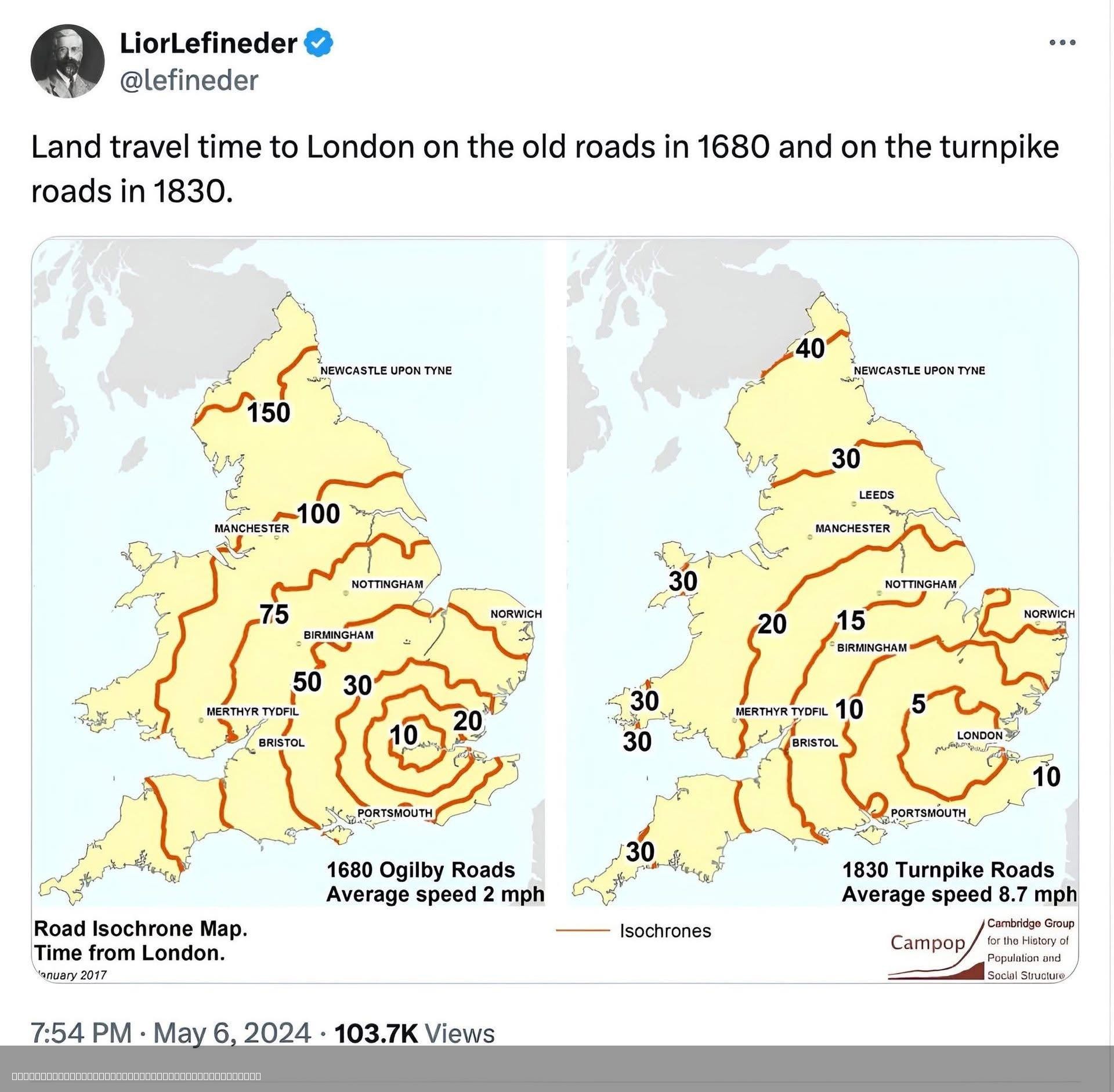Travel Time to London 1680 vs 1830 Map


Marcus Rodriguez
Historical Geography Expert
Marcus Rodriguez specializes in historical cartography and geographic data analysis. With a background in both history and geography, he brings unique...
Geographic Analysis
What This Map Shows
The visualization titled "Travel Time to London 1680 vs 1830 Map" illustrates the varying travel times from different regions to London during two distinct periods in history. The map provides a fascinating snapshot of how transportation advancements and societal changes influenced mobility across Britain and continental Europe. It highlights the significant changes in travel times over a mere 150 years, reflecting broader trends in infrastructure development, technological innovation, and the growth of urban centers.
Deep Dive into Travel Time and Transportation Evolution
Travel time is a critical indicator of connectivity and economic activity, and it offers insights into how societies evolved. In 1680, travel was predominantly reliant on horse-drawn carriages, walking, and maritime routes. Roads were often poorly maintained, and long-distance travel could take weeks, if not longer. A journey from the far reaches of Scotland or the southwest of England could be a daunting prospect, riddled with delays and hazards.
However, by 1830, the advent of the Industrial Revolution had transformed the face of transportation. The introduction of railways revolutionized travel, drastically reducing the time needed to reach London. The completion of the first steam-powered railway, the Stockton and Darlington Railway, in 1825 marked the beginning of a new era in public transport. By the time of this map, rail networks were rapidly expanding, connecting towns and cities, and making travel faster and more accessible than ever before.
What’s fascinating is that these advancements were not merely about speed; they also affected the economic landscape. Cities closer to London benefitted from increased trade and commerce, while those further away struggled to keep pace. The connectivity offered by railways allowed for the movement of goods and people in ways that were unimaginable in the 17th century.
Interestingly, the impact of these transportation changes extended beyond just time savings. The new rail systems prompted urban migration as people flocked to cities for job opportunities, leading to significant demographic shifts. This migration fueled the growth of London as a metropolis, attracting a diverse population eager to partake in the burgeoning industrial economy.
Regional Analysis
When examining the regions on the map, one can discern notable differences in travel times to London between 1680 and 1830. For instance, travel from Manchester took approximately 16 hours in 1680, a staggering amount of time given the distance. By 1830, that time was slashed to just a few hours, thanks to the Manchester-Liverpool railway opening in 1830.
Similarly, travel from Scotland, particularly Edinburgh, was dramatically altered. In 1680, a journey could take several days, involving arduous travel over rough terrain and unreliable routes. By 1830, the establishment of railway lines meant a journey to London could be completed in less than a day.
Regions like the West Midlands and the South East saw even more pronounced benefits. The map illustrates that areas within a 50-mile radius of London experienced a boom in connectivity and economic activity, while more remote regions lagged behind. This uneven development raised questions about regional disparities that echo into contemporary discussions about accessibility and economic equity.
Significance and Impact
Understanding the historical context of travel times to London in 1680 and 1830 is essential for grasping the significance of transportation in shaping modern society. The evolution of travel not only facilitated the movement of people but also stimulated economic growth, urbanization, and cultural exchange.
Today, as we grapple with issues of transportation infrastructure, climate change, and urban planning, the lessons learned from this historical transformation remain relevant. The rapid advancements in the 19th century serve as a reminder of the potential that innovative transportation solutions can have on a society’s economic and social fabric. Furthermore, current trends such as the rise of high-speed rail in Europe and the ongoing discussions about sustainable transport options underscore the importance of this topic in today’s world. Have you noticed how much easier it is to travel now compared to those early days? The journey continues to evolve, reflecting our changing needs and technological capabilities.
In conclusion, the "Travel Time to London 1680 vs 1830 Map" not only serves as a historical reference but opens up conversations about the intricate relationship between transportation, society, and economic development. It’s a powerful reminder of how far we’ve come and the journeys that still lie ahead.
Visualization Details
- Published
- August 3, 2025
- Views
- 116
Comments
Loading comments...